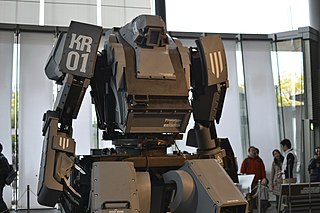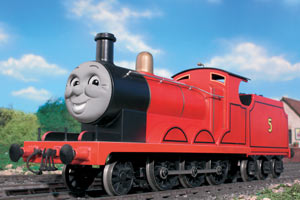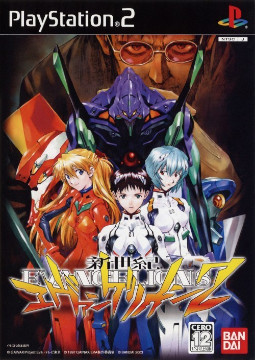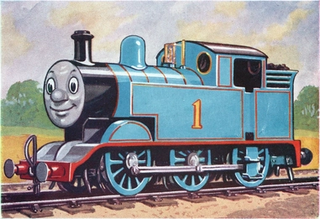
The following is a list of fictional vehicles.

The following is a list of fictional vehicles.
Buses often appear as settings, or sometimes even characters, in works of fiction. This is a list of named buses which were important story elements in notable works of fiction, including books, films and television series.
There are many railway and other 'vehicle' characters in The Railway Series children's books by Rev. W. Awdry. For a list, please see:
Thomas the Tank Engine and Friends is the TV spin-off from The Railway Series . As such, it shares many characters with the original books but also introduces a vast array of new characters. These, too, are collated in a set of lists:
The following are lists of mixed types of vehicles, not otherwise categorized above:

In science fiction, mecha or mechs are giant robots or machines typically depicted as piloted and as humanoid walking vehicles. The term was first used in Japanese after shortening the English loanword 'mechanism' or 'mechanical', but the meaning in Japanese is more inclusive, and 'robot' or 'giant robot' is the narrower term.

Warhammer 40,000 is a miniature wargame produced by Games Workshop. It is the most popular miniature wargame in the world, and is particularly popular in the United Kingdom. The first edition of the rulebook was published in September 1987, and the tenth and current edition was released in June 2023.

Artdink Corporation (株式会社アートディンク) is a Japanese developer of video games, based in Tsukishima, Tokyo.

The Fat Controller is a fictional character in The Railway Series books written by Reverend W. Awdry and his son, Christopher Awdry. In the first two books in the series he is known as The Fat Director, and as of the third book he becomes The Fat Controller, as the railway has been nationalised. In the foreword to the 1951 book Henry the Green Engine, his real name is revealed to be Sir Topham Hatt.

James the Red Engine is a fictional anthropomorphic red tender locomotive from The Railway Series children's books by the Reverend Awdry and the TV series adaptation Thomas & Friends. He has a 2-6-0 ("Mogul") wheel arrangement and is engine number 5 on the North Western Railway, the Fat Controller's railway on the Island of Sodor.

The Railway Series is a series of British books about a railway known as the North Western Railway, located on the fictional Island of Sodor. There are 42 books in the series, the first published in May 1945 by the Rev. Wilbert Awdry. Twenty-six books were written by Awdry, the final one being written in October 1972. Sixteen more were written by his son, Christopher Awdry, between September 1983 and July 2011. The series features many anthropomorphic vehicles, including Thomas the Tank Engine. Thomas became the most popular and famous character in the series and the titular character of the television series Thomas & Friends from 1984 to 2021. The children's television series originated as adaptations of these stories.

Catbus is a fictional supporting character in the Studio Ghibli film My Neighbor Totoro, directed by Hayao Miyazaki. It is a large, grinning, twelve-legged cat with a large bushy tail and a hollow body that serves as a bus, with windows and seats covered with fur. The character's popularity has led to a spinoff short film, toys for children, an art car, and an exhibit in the Ghibli Museum. Catbus is believed to be based on the Japanese bakeneko, an ancient urban legend where cats that grow old learn to shapeshift. In the original Japanese version of My Neighbor Totoro, Catbus is voiced by Naoki Tatsuta, whilst in the Disney English release, Catbus is voiced by Frank Welker, and by voice actor Carl Macek in the Streamline Pictures release.

Shōji Kawamori is a Japanese anime creator and producer, screenwriter, visual artist, and mecha designer. He is best known for creating the Macross mecha anime franchise and the Diaclone toyline, which were in turn the basis for the Robotech and Transformers franchises, respectively. He is also known for creating The Vision of Escaflowne anime series. He pioneered several innovative concepts in his works, such as transforming mecha and virtual idols. His work has had a significant impact on popular culture, both in Japan and internationally.
Mine Yoshizaki is a Japanese manga creator. His most well known works are Sgt. Frog, a manga he created which later received an anime adaption, and Kemono Friends, a multimedia franchise for which Yoshizaki serves as concept designer.
Many of the tropes of science fiction can be viewed as similar to the goals of transhumanism. Science fiction literature contains many positive depictions of technologically enhanced human life, occasionally set in utopian societies. However, science fiction's depictions of technologically enhanced humans or other posthuman beings frequently come with a cautionary twist. The more pessimistic scenarios include many dystopian tales of human bioengineering gone wrong.

Yutaka Izubuchi is a Japanese anime mecha and character designer, anime director, illustrator and manga artist. He was born in Tokyo, Japan and grew up in Yokohama.

Neon Genesis Evangelion 2 is a Japanese video game for the PlayStation 2 developed by Alfa System and published by Bandai. It has role-playing video game and world-controlling elements, and allows the player to follow a number of characters through multiple versions of the main plot of the anime Neon Genesis Evangelion. The PlayStation Portable port was released on 2006 as Neon Genesis Evangelion 2 -Another Cases-.
Mecha anime and manga, known in Japan as robot anime and robot manga, are anime and manga that feature robots (mecha) in battle. The genre is broken down into two subcategories; "super robot", featuring super-sized, implausible robots, and "real robot", where robots are governed by realistic physics and technological limitations.
Eileen Mabel Gibb was a British author. She is best known for writing the Sammy the Shunter series of books using the name Eileen Gibb as opposed to her married name of Holder.

Thomas the Tank Engine is an anthropomorphised fictional tank locomotive in the British Railway Series books by Wilbert Awdry and his son, Christopher, published from 1945. He became the most popular and famous character in the series, and is the titular protagonist in the accompanying television adaptation series Thomas & Friends and its reboot Thomas & Friends: All Engines Go.

Tayo the Little Bus is a South Korean 3D computer-animated television series. The series is produced by Iconix Entertainment for the Educational Broadcasting System in collaboration with the Metropolitan Government of Seoul. The show was produced with the help of Seoul mayor Oh Se-hoon's administration. It began airing in South Korea on EBS in 2010 and an English-dubbed version of the series began airing on Disney Junior (Asia) in 2012, with Disney Junior following in 2013. In the United States and Canada, Hulu is the exclusive distributor of the series, though the fourth, fifth, and sixth seasons are on Netflix. In Indonesia, the series is distributed by RTV, Indosiar and Mentari TV.

Thomas & Friends is a media franchise created by Rev. W. Awdry and Britt Allcroft. The franchise revolves around a railway, called the North Western Railway, located on the fictional Island of Sodor. The current title character of the franchise is Thomas the Tank Engine, an anthropomorphised steam locomotive, who works with other engines, including Edward, Henry, Gordon, James, Percy, Toby and many others. The franchise began with stories told from Wilbert Awdry to his son. In 1984, it was turned into a television series, which spawned a reboot series, titled Thomas & Friends: All Engines Go.
A multimedia franchise is a media franchise for which installments exist in multiple forms of media, such as books, comics, films, television series, animated series and video games. Multimedia franchises usually develop due to the popularization of an original creative work, and then its expansion to other media through licensing agreements, with respect to intellectual property in the franchise's characters and settings, although the trend later developed wherein franchises would be launched in multiple forms of media simultaneously.